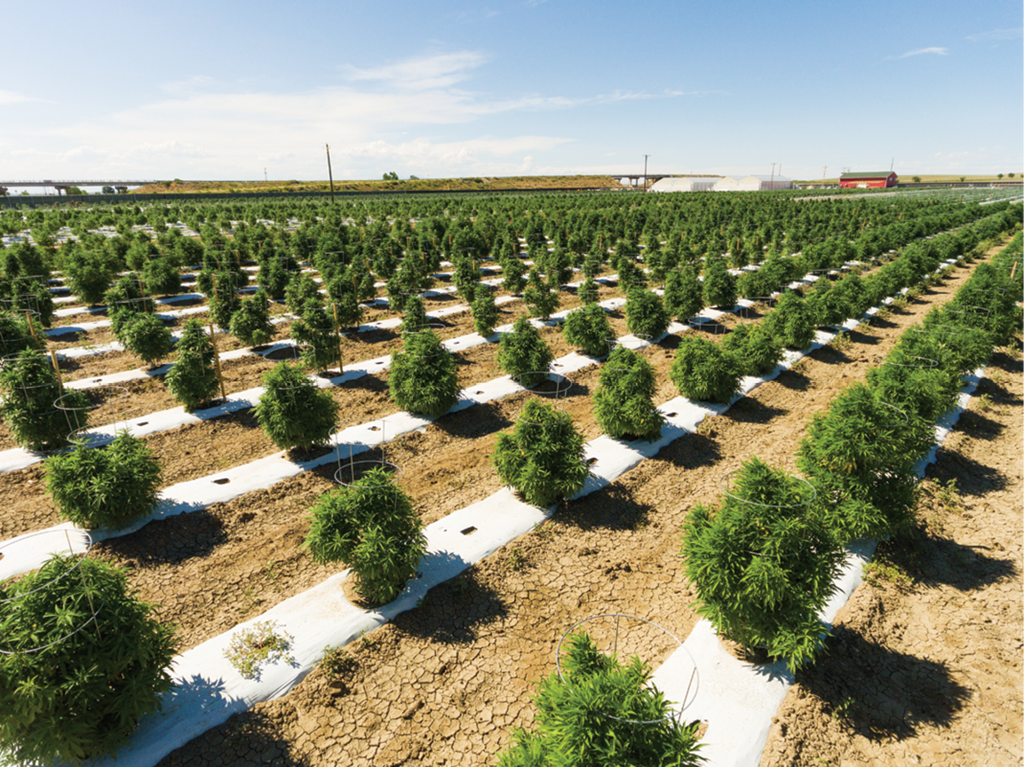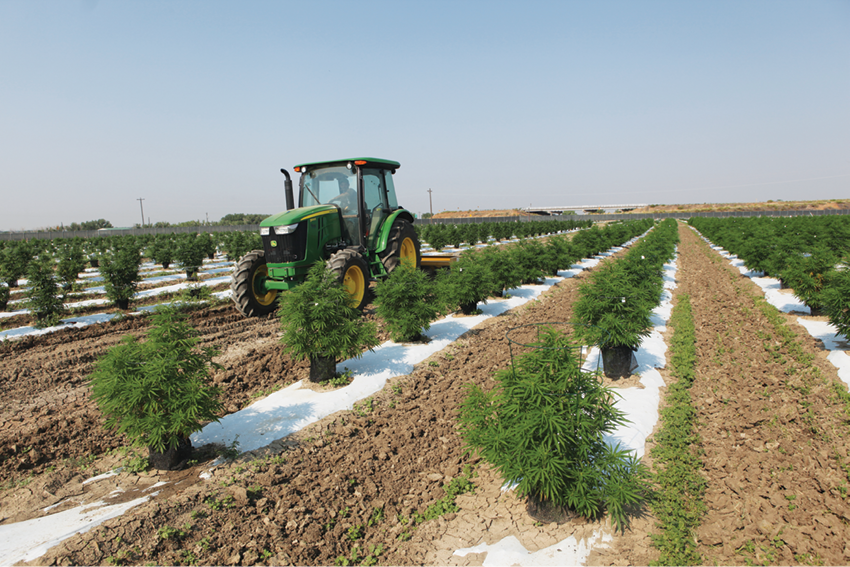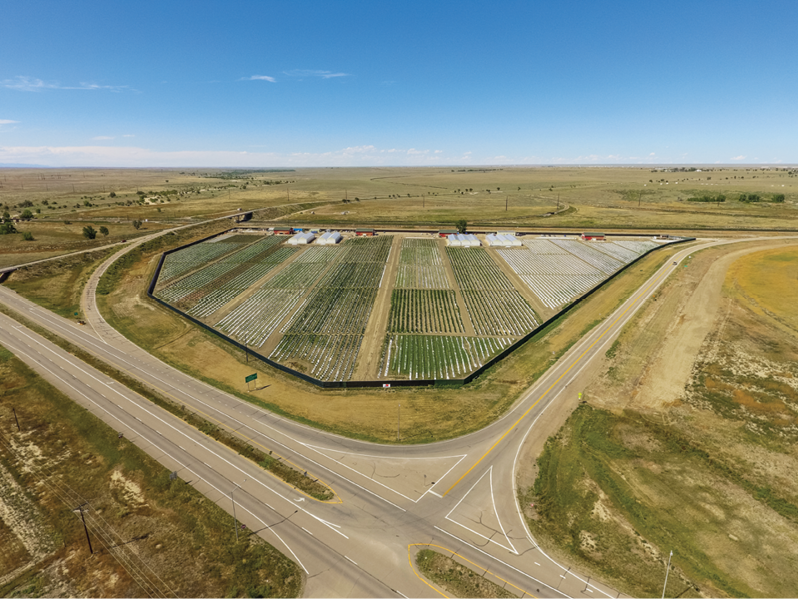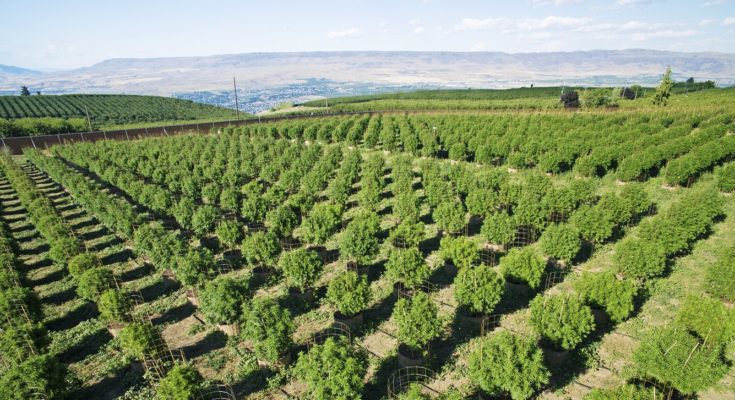Columns – Hort How-To
Growing under the sun has its advantages, such as low operating costs, but other rewards— and risks—also lurk in the shadows.

The Sun Is Free, But There’s No On/Off Switch
The indoor grower has it made in the shade when it comes to light management. The ability to deliver maximum light and completely dark periods is a major advantage of indoor cultivation. Throw the switch and the light goes on, throw it back and the light goes out. The greenhouse grower gets that control from light deprivation curtains. But the seasonal, outdoor grower has no control over light, and the plants’ development succumbs to nature’s rhythms.
The obvious difference between indoor and outdoor growing is photoperiod. Indoor growers control photoperiod at will, but the shortening of daylight that triggers cannabis to go into flower outdoors happens but once a year. And at lower latitudes, the photoperiod may be so constant that plants never flower unless they are vegged with photoperiod-extending supplemental light, which is discontinued when the plants reach the desired size.

Outdoor growers have their profit eggs all in one basket, which is why between weather and pests, just one field of plants is a risky business proposition. The indoor grower, while also facing risks of pest-induced crop loss, can recover from a single crop loss, and revenue will resume with the next harvest. But the seasonal grower must build a business plan to deal with the very real possibility of poor or no product, as well as what their business does for revenue for a year before they get the next crop. Obviously, outdoor growers that are blessed with a warm climate year-round have the opportunity to cultivate year-round, though still with some challenges.
The seasonal changes in daylight are nature’s preprogrammed dimmer control, and outdoor growers have no choice but to grow with that program. Whereas an indoor plant may get four weeks in vegetation and eight weeks in flower, outdoor cannabis planted on May 15 has eight to 12 weeks of veg time available to it. In that time, large amounts of foliage can grow, and that growth rate coupled with a growing scheme (standalone plants versus trellised plants) allows growers to create huge canopy areas with few plants. This offers an opportunity to propagate fewer plants to fill out the canopy, and that cuts propagation space required.
At 40 degrees north latitude where we live, most outdoor plants go into transition mid to late July, and are in full flower in early August. Northwest growers have reported plants that were just starting to transition by mid-August.
This seems like an extremely large difference that we have not yet been able to confirm against the physics. But if true, the more north you grow, the shorter your flowering time is before the onset of autumn weather, and that means lower predictable yields. One month’s difference is huge to the outdoor grower, so cultivators must be sure they are not doing anything to delay flower onset, such as providing too much nitrogen leading up to and during the transition period. (Read more about nitrogen’s impact on cannabis yields in the March issue of CBT, or online at bit.ly/bigger-fatter-plants.)
Cannabis plants are not naturally inclined to be in flower for eight or more weeks. The natural course of events is that flowers will be fertilized, and the plants—having achieved their mission to reproduce buds—stop growing significantly, seeds mature quickly, and by the end of August/early September, the life cycle is complete. The sinsemilla growing method that works so well for indoor growing extends the flower period indefinitely. Holding off harvest for as long as the weather allows is the bonus period for outdoor growers. Get a perfect fall, get a perfect harvest.
Weather or Not
Get lousy weather, however, and the whole crop could be at risk, so the outdoor grower needs to watch the skies along with other farmers. Difficulty working fields or higher disease pressure due to rain can end up controlling when the season’s events occur from plant-out to harvest. It also influences processes in that when the weather turns, it’s time to bring the crop in as fast as possible.
Grape growers watch the forecasts in the fall for the same reason outdoor cannabis growers do—the quality of the crop is in the balance. When the autumn weather takes a change to Botrytis-favorable conditions, one operating policy is to call the harvest before Botrytis symptoms can spread.

Cost and Yield
Being the low-cost producer guarantees nothing. Being the low-cost and highest-yielding grower guarantees everything (quality aside). Under the seasonal model, yields are critical, and the easiest way to maximize yields would seem to be to plant more plants. But in some states, such as Washington, licenses come with canopy-area restrictions, so even if you have a lot of outdoor space, the annual yields could be constrained and multiple licenses could also be required to reach the desired output levels. So be sure to run those numbers as part of your business analysis.
Trellising can support high-yielding canopies, but the dirty little secret about trellises is that one of the most important aspects of a trellis is labor reduction. Hop trellises are designed to make harvest fast, and apple trees in a “Y”-shape canopy allow machines to harvest more apples more easily. Our test of a trellis design is how well it reduces annual labor costs while also increasing yields.
This puts a premium on growing schemes that do not require a lot of management, can be easily accessed for spraying/maintenance and can be harvested with machinery. The trellis design that allows a “hedge cutter” to remove 90 percent of the oil-producing buds in a single pass could be an easy sell over a system calling for hand labor.
Nutrient Content: The Growth-Driver With Some RiskCultivated soils have a wide range of nutrients in them, and when direct soil growing is used, nutrient management can be as simple and as quick as adding supplemental fertilizers to the soil, or it can also be a long-term affair by using organic-matter amendments. If the grower can use locally sourced organic material, costs are further reduced.
Nutrient content in the soil is the real gas pedal for outdoor growers. The available light is set, as is the atmospheric CO2, so this leaves nutrition as the most important tool a grower has to control growth. The rules, however, remain the same for outdoor growers: Give plants the same nutrients, and they will grow the same. But that is where outdoor growers may face some problems.
The typical nutrient flowering formulas for container cannabis plants are highly concentrated solutions ranging upwards of 3,000 ppm of mineral nutrients that are being poured onto the soil. Most nitrogen used in cannabis nutrient products is nitrate nitrogen, which is a negatively charged ion when dissolved in water, so it is not attracted to similar negatively charged soil particles. This means rain can flush a lot of nitrates out of a field, posing a very real contamination problem. Well-water samples from the middle of the California Central Coast agricultural region show 24 ppm of dissolved nitrate nitrogen, whereas municipal-treated water nitrate content is near zero. The EPA has set the nitrate-nitrogen concentration limit in drinking water at 10 mg/L (10 ppm), and excessive concentrations of dissolved nitrates in drinking water are known to be a very real human health hazard, especially for infants and pregnant women, according to the Water Research Center.
The nitrate issue is cause for considering a move to ammoniacal nitrogen sources, including urea-based fertilizers that produce positively charged ammonium ions that do adhere to negatively charged soil particles, and therefore reduce runoff. Nutrient runoff is a predictable public health issue for the industry, so if companies or trade organizations want to do the industry a tremendous favor, they could fund a nutrient-runoff monitoring program that will help us identify and possibly steer the industry away from a predictable public health issue and public relations disaster. If you are an outdoor grower, get your head wrapped around the fact that you are now a farmer in the government’s eyes, and you are subject all the same regulations as your non-cannabis farmer colleagues. If you thought cannabis regulations were a pain, just wait.
Outdoor Pests
Pest management is challenging in any venue, but outdoor growers face a broader range of pests. We usually don’t find grubs in indoor container plants, but the outdoor grower shouldn’t be surprised. Generally, pest management outdoors is the same as indoors, and all the tools that work indoors work outdoors, including biological predators. The indoor grower will have a small sprayer, and, depending on the size of the operation, the outdoor grower may need a tractor-mounted sprayer to keep application times down.
Get Out There
By understanding your light, nutrients and water, and controlling those elements to the best of your ability, outdoor cultivators have the potential to make a real impact on the future of cannabis quality. The challenge for all growers, indoors and out, remains controlling costs and maximizing yield. And transitioning from indoor to outdoor merely requires getting in touch with your inner farmer.





